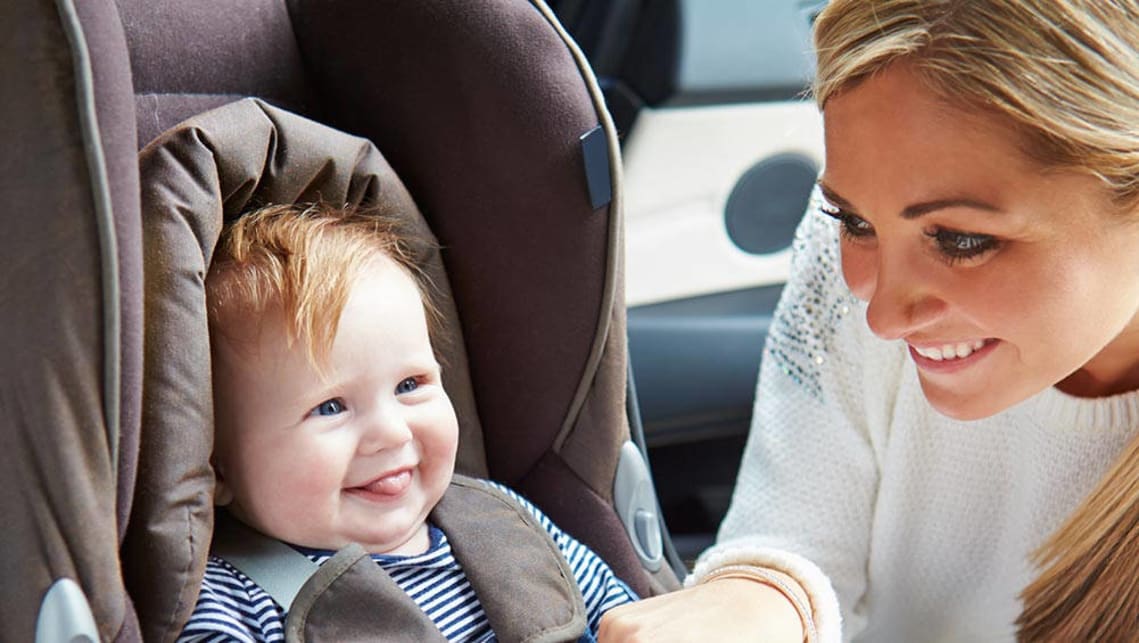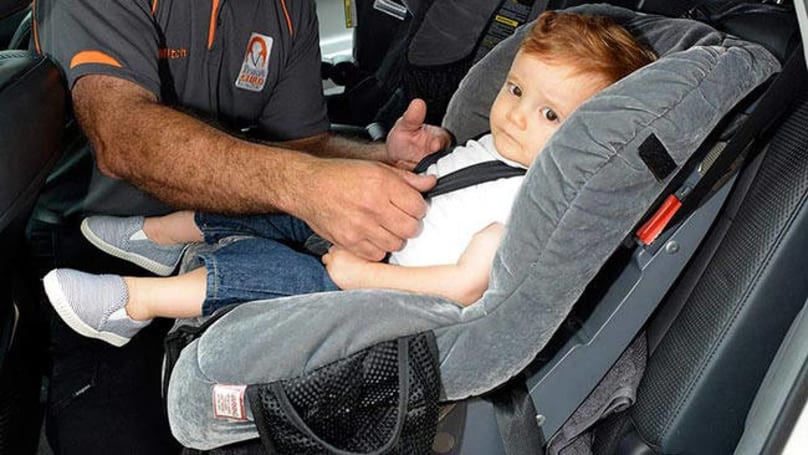
Can P-platers drive a V8?
Can P-platers drive V8 cars? Literally and physically yes, and perhaps even if...
Browse over 9,000 car reviews

There are scores of capsules and seats to keep your children safe.
Australian youngsters have never been safer on the road, thanks to an abundance of airbags and side-impact protection and the ever-increasing rear-view cameras.
Child seats, too, have improved dramatically with the addition of head protection and the adoption this year of Isofix fittings that allow seats to be latched solidly to mounts on a car's chassis.
Even so, tens of thousands of people still ignore the basics.
"People are so concerned about the right healthy diet, and education, but then they put their children in an SUV and let them crawl around unrestrained. It's almost unbelievable in this day and age," says Dr Laurie Sparke, who led a safety revolution at Holden for nearly two decades.
More than 5000 people were fined for not having children restrained or incorrectly restrained in a vehicle
His concerns are reflected in the number of people caught by police doing the wrong thing.
"In the past financial year, in NSW alone, more than 5000 people were fined for not having children restrained or incorrectly restrained in a vehicle," says Dimitra Vlahomitros of the NRMA.
"There are still quite a few people out there who are not getting the message."
She says it's relatively simple to get information on child protection and to buy a suitable restraint. She recommends www.childcarseats.com.au, now listing 177 seats from 20 brands. There are rear-facing capsules, forward-facing seats and boosters, from $70 to $659.
Each gets star ratings for protection and ease of use and there is also user feedback.
For now, the only seats with five-star protection rating are booster seats for four to eight-year-olds produced by Safe-N-Sound, Hipod and Babylove, priced from $129.
"It doesn't mean the most expensive child restraint is the safest," says Vlahomitros. "Shop around. You might be able to get a really good restraint ... on special."

Information for the safety ratings comes partly from the Australian New Car Assessment Program (ANCAP) as part of its new-car safety testing.
Head of ANCAP James Goodwin says part of the testing uses two child crash dummies, an 18-month-old and a three-year old. "We record the data from (the child dummies) and, although it doesn't contribute to the final score for the car, we pass it on," he says.
There are two sets of test results, split before and after 2012. That's because the test procedure was changed and improved that year with more precise measurement of forces on the dummy's head and knees, as well as reducing the chances of companies using a smaller-sized dummy to get a good result for a booster seat.
Crash test results come from frontal, side and oblique impacts at 56, 32 and 32km/h respectively.
For ease-of-use results, testers rate packaging, instructions, labels and physically securing the seat in the car.
On that front, many experts believe the arrival of Isofix in Australia is a major advance. Instead of relying on the seat belt to hold the device in place, it uses hooks on the chassis and latches in the seat.
In Australia, there is also a unique requirement for a top-tether strap identical to those fitted to conventional seats.
But it's not perfect, says NRMA senior safety expert Jack Haley.
"We think Isofix is a valuable addition to child safety but it's not a silver bullet," he says.
"Isofix seats can be easier to install than conventional child seats but they're not necessarily safer in an accident. We need to see some crash data to determine their real world performance."
He says cost can be a deterrent for some parents. "The experience in Europe is that there's less than a 15 per cent take-up because Isofix is more expensive and heavier. Manufacturers tend to pitch them as luxury versions so it may be something we will see more commonly in prestige cars."
Beyond choosing the capsule or booster, there is even a guide to choosing the right car. The mynrma website presents vehicles' ANCAP star rating, how many child seats can fit, anchor point location, rear-seat access and more.
If you have any questions or doubts, check with a professional child-seat installer
The variety of vehicles sold in Australia and the ongoing test program mean that it's not comprehensive but there are comparative scores for people-movers, SUVs, large cars, cars under $30,000 and cars over $30,000.
"It all starts with the family car. People are always looking to upgrade, so airbags are really important," says Vlahomitros.
"But people also need to look at where the seat anchor points are. In a hatchback, they are usually in the boot and that can make it hard to load shopping and prams. Make sure (multiple) restraints can fit across the back seat."
There is one piece of advice, obvious yet critical, the experts agree on. If you have any questions or doubts, check with a professional child-seat installer.
Second-hand child restraints may be tempting financially but older car seats present several safety risks. Experts recommend against using a car seat that is more than 10 years old.
Also look for cracks, splits and frayed straps and ask about the history of the seat. The seat should have a tag or sticker saying it meets AS/NZS 1754 (version 2000, 2004, 2010 and 2013). Ask for the instruction booklet.
Safety guru Laurie Sparke cites three major milestones in child safety.
"The first step was when seat belts were put into the rear seats of cars. The next step was the introduction of child seats. Then it's the new generation of seats with head support," he says.
"Any sort of seat belt in the back meant the kids' chances of survival were pretty good.
"Once the little buggers were strapped into a seat with a harness they were pretty much invincible. We started seeing crashes where the people in front were killed but the children in the back survived.
"Today, the real risk of occupant injuries is from side impact. So it's a good embellishment to have the head protection for kids."
A lot of parents think they can fit their child into an adult belt, or the front seat, far too early
In the greater context, Sparke regards the shift to Isofix as trivial — "There are some benefits but it's pretty small" — and says parents are more critical than technology when it comes to making children safer.
"The challenge comes from convincing parents to put kids into seats, then in adjusting the harnesses correctly. You still see kids unrestrained.
"The biggest concern for me today is the transition from a booster seat to an adult seat belt. A lot of parents think they can fit their child into an adult belt, or the front seat, far too early.
"A child's pelvic area has to be fully developed to hold the adult seat belt in place. It's too easy for it to ride up."
NRMA's Dimitra Vlahomitros adds: "Don't graduate your kids too early. We're finding parents are relatively good in getting the message in having their first baby in a capsule. But when the second or third comes along they need to make sure every child is in the right restraint for their age.
"It used to be based on height and weight but now it's age. With the new standard there are shoulder markers on the restraints, which is a good way to know when the child has outgrown the seat."
Comments